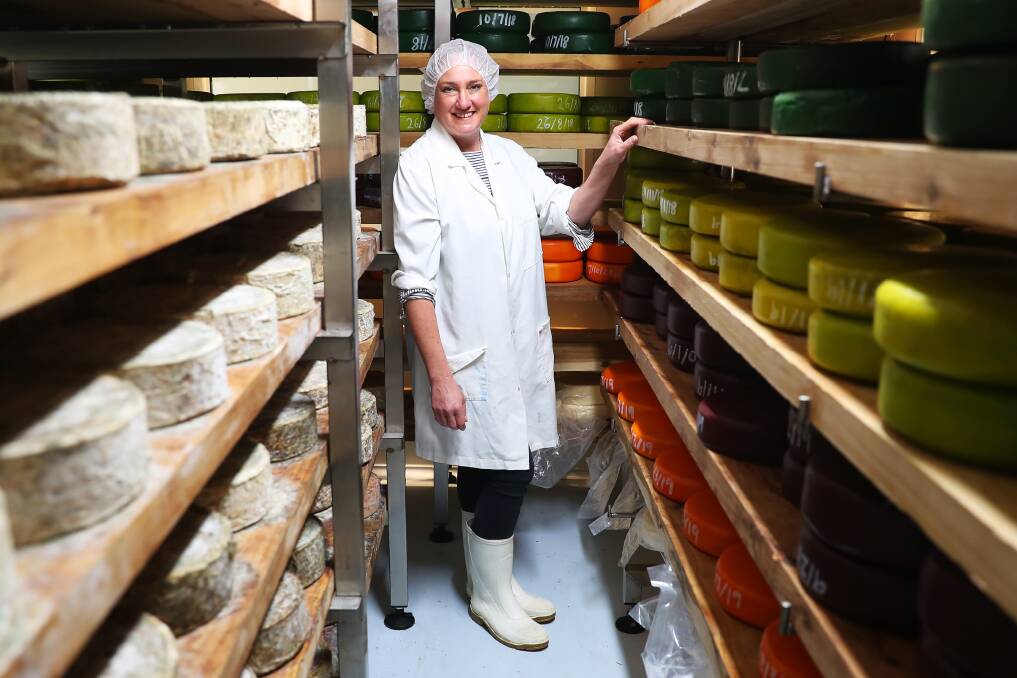Behind the Scenes with Cheese Makers Melbourne: Including Floridia Cheese
Behind the Scenes with Cheese Makers Melbourne: Including Floridia Cheese
Blog Article
Unlocking the Tricks of Artisanal Cheese Making: A Step-by-Step Do It Yourself Guide
In the realm of culinary craftsmanship, artisanal cheese making stands as a testament to the delicate balance between tradition and innovation. As we begin on this journey to demystify the art of creating charming cheeses, we are encountered with a tapestry of abilities and tricks waiting to be unwinded.
Choosing the Right Milk
When getting started on the journey of artisanal cheese production, the choice of milk plays a vital duty in establishing the top quality and features of the last item. The kind of milk picked influences the taste, structure, and generally profile of the cheese.
When selecting milk for cheese production, it is necessary to consider the fat web content. Higher fat web content in milk can lead to a creamier and richer cheese, while lower fat web content might result in a drier and stronger texture. In addition, the resource of the milk, whether from cows, goats, sheep, or buffalo, adds distinct flavors and features to the cheese (Floridia Cheese Thomastown). Each kind of milk brings its own subtleties, enabling a variety of cheese ranges to be crafted based on the selected milk. Inevitably, the choice of milk is an essential choice that sets the structure for an effective artisanal cheese-making endeavor.
Culturing and Coagulating
To start the cheese-making process, the important steps of culturing and coagulating must be thoroughly executed to transform milk right into curds and whey. The kind of society utilized can considerably impact the flavor, appearance, and ripening of the last cheese item.

The timing and temperature control during culturing and coagulation are crucial elements that influence the final outcome of the cheese. Correct execution of these steps is vital to make certain the desired texture, taste, and consistency of the artisanal cheese being generated.
Draining and Pressing Curds
After the milk healthy proteins have actually coagulated and the curds have been cut to launch whey, the following important action in artisanal cheese making entails draining pipes and pressing the curds to accomplish the desired appearance and consistency of the last cheese item. Draining is the process of separating the curds from the whey. This can be done by transferring the curds into a cheesecloth-lined colander or mold and mildew and enabling the whey to drain off normally. The time for draining pipes can vary relying on the type of cheese being made and the wanted dampness material.
Pressing assists get rid of any kind of continuing to be whey and compacts the curds to form a solid cheese wheel. Proper pressing and draining pipes are crucial steps that substantially influence the top quality and qualities of the artisanal cheese being created.
Aging and Flavor Methods
Applying meticulous aging and flavoring methods is essential in boosting the deepness and complexity of artisanal cheeses, boosting their taste profiles to elegant levels of improvement and sophistication. Aging plays a crucial duty in developing the one-of-a-kind flavors and textures that distinguish artisanal cheeses. Throughout the aging process, cheeses are kept in thoroughly managed environments where elements such as airflow, temperature, and humidity are manipulated to encourage the growth of useful molds and germs. This controlled setting like this enables celebrity to develop gradually, establishing intricate scents and abundant flavors.
Seasoning methods also add considerably to the last taste of artisanal cheeses. Cheesemakers might select to present extra tastes by integrating active ingredients such as natural herbs, spices, or also fruits right into celebrity throughout the production process. In addition, some cheeses are cleaned or massaged with various liquids, such as brine or alcohol, to boost their tastes and structures.
Covering and Storing Cheeses

Conclusion
In final thought, understanding the art of artisanal cheese making entails thoroughly picking the best milk, adhering to accurate culturing and coagulating procedures, draining and pushing curds efficiently, and making use of different aging and flavoring strategies. By adhering to these steps faithfully and with interest to detail, you can produce your very own tasty and unique cheeses at home. Bear in mind to wrap and keep your cheeses effectively to make sure optimum flavor and appearance advancement. Satisfied cheese making!
Each type of milk brings its very own subtleties, permitting for a get redirected here broad array of cheese ranges to be crafted based on the picked milk.After the milk proteins have coagulated and the curds have been cut to launch whey, the following vital step in artisanal cheese making includes draining pipes and pressing the curds to accomplish the preferred structure and consistency of the final cheese product. Most cheeses should be wrapped in wax paper or cheese paper to permit them to take a breath while shielding them from drying out. For cheeses that require to continue aging, such as bloomy rinds or washed rinds, guarantee they are kept in a great setting like a cheese cave or a refrigerator set to the appropriate temperature level. By paying attention to the covering and storage space of artisanal cheeses, cheese manufacturers and fanatics can maintain the stability of these specials and completely enjoy their complicated flavors.
Report this page